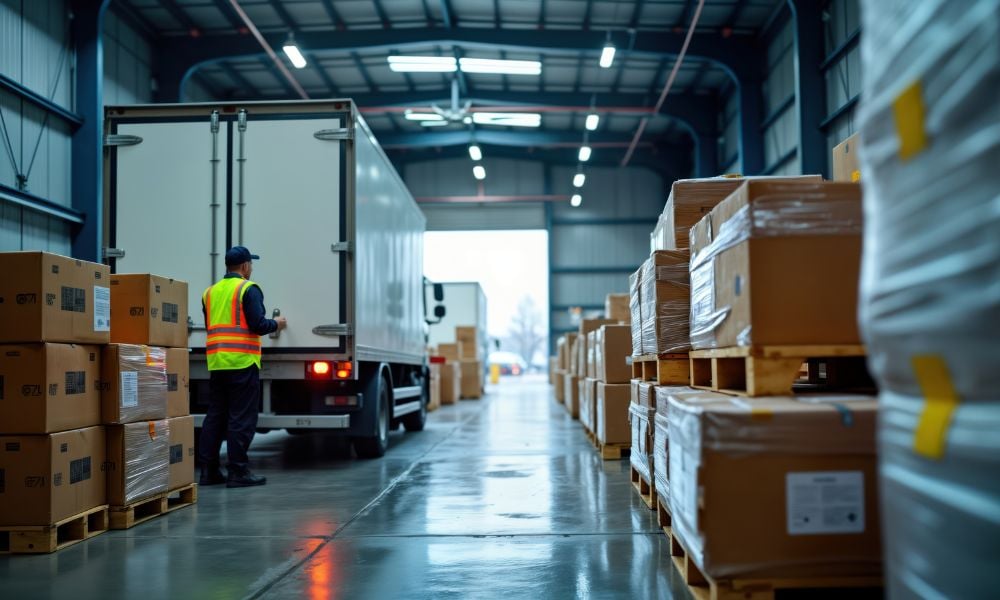Five HR leaders came together virtually to discuss the importance of L&D

FOR all the upheaval that came with the COVID-19 pandemic, some of the basics of the workplace have remained true, such as the need for business continuity, the drive to continue serving customers and clients and the importance of employee communications.
Also important? Learning and development, according to Katie Ramoutar, manager of organizational development solutions at MHS Talent Development, in moderating an exclusive roundtable with Canadian HR Reporter.
Training can play a vital role “in helping to provide people with the resources and support that they need to manage the crisis today in their organizations, to really show off those skills and to make sure that they’re in a great place for when the world finds its new normal,” she says.
“The learning function is absolutely critical during this time. [It’s about] looking out for employees’ well-being, mental health, emotions and how they’re feeing through all this, but also how they are going to be feeling and how they’re going to be leading their organization in the future.”
Ramoutar was joined — virtually — by Gina Jeneroux, chief learning officer at BMO Financial Group; Penny Farinha, vice president of HR at Ecobee; Kimberly McLeod, manager of learning experience at Recipes University, the training hub for Recipes Unlimited; and Carolyn Lyons, manager of dealer training and employee development at Yamaha Motor Canada.
BMO acts fast in response to pandemic
Before the pandemic hit, BMO had about 5,000 employees who would typically work from home at any given time. When COVID-19 came into full force, that number jumped to 30,000, says Jeneroux.
“From an HR perspective and from a learning perspective, we’ve had a lot of focus on how do we actually equip and enable everybody who is working from work in new ways and everyone who is working from home in new ways.”
When it comes to learning, there’s always been two tracks at BMO: a “just-enough, just-in-time” approach and a long-term approach around advancing the skills for job career interests and the future of work. During the pandemic, it’s about keeping a finger on the pulse of what employees are saying, she says.
“Checking in with them, finding out the things that they most need, whether they are working in work locations or whether they are working remotely. And... part of what our people needed really quickly was information about: How do you manage through times of uncertainty, how do you lead remotely, how do you engage people? And, most importantly, it’s around the resilience and the well-being and making sure that people have the resources to be able to manage their stress, to manage their personal situations.”
But employees also need to be able to do their job effectively, says Jeneroux.
“They need to be able to manage relationships, manage customers, be able to develop new skills as they are thinking about their career and their future and as we’re trying to prepare people for the future of work. So, as much as certain aspects of what we do change very dramatically, a lot of what people are looking for is actually the types of things that we would hear from them all the time and so we really have to manage both of those things,” she says. “It’s really about reimagining what work will look like in the future and what’s required to set everybody up for success as we’re pivoting back into a different place that will have a different mix and a different way of working.”
Recipe looks at new style of working
Being in the restaurant industry, Recipe Limited has always had to move quickly and respond to changing situations. That’s helped the company under the pandemic, says McLeod.
“We’ve been able to really pull together and create things pretty reactively to the needs of the organization.”
With COVID-19, it’s all about a new style of working, so the learning strategy is focused on asking people: “What do you need to be successful that you aren’t able to get right now?” and building around that, she says. That’s included managing shifting priorities. For example, people who may be used to tackling one big project for a year are now looking at six or seven priorities.
It’s also about rebuilding how to manage and maintain virtual teams, says McLeod.
“One of the biggest [topics] is how to lead in times of uncertainty. So, how do you speak to people? How do you answer their questions? How do you give people what they need?... That was one of our biggest hits in terms of courses and content that people are interested in taking.”
The company has always been focused on trying to have a blended approach, since it’s an organization that’s so spread out, says McLeod.
“We’re trying to meet the needs of our learners and a diverse set of people who have different learning styles and needs and we’re really just focusing on, especially in the professional development area, on making learning accessible for people... in their space at their own pace... so that people who are experiencing a bit of unease and discomfort and stress aren’t feeling overwhelmed by the opportunity to learn but really are able to do it on their own time and at their own pace. And it’s adding to their experience, rather than detracting from it.”
Yamaha pivots to virtual training
At Yamaha, the company is focused on supporting its dealer network with training for salespeople, along with employee development programs at the head office. Amidst the pandemic, the company has done training sessions that bring together all the managers to discuss how to manage their teams remotely, says Lyons.
“We’re keeping those parts moving,” she says. “Training can still happen. That’s a key message for everyone: You can still look after employee development in this time. You just have to pivot how you’re doing it.”
There’s also been a big focus on social media training.
“[It’s about] how can they start leveraging — whether it’s Google My Business or Facebook or Instagram — to be able to let their customers know ‘Hey, we’re open for business,’” she says.
On the bright side, the company already had e-learning lessons being built for that.
“[But] the process can take a little bit longer than meeting the needs, so what we did is we flipped it around and we had the content built and we changed it into ‘How can we arm the field team with the information?’ so that they could go out with their dealers and hold individual training sessions or support them in building those learnings,” says Lyons. “So, we’ve used that approach of taking the content for the e-learning but coming up with reference guides and something that will be a stop gap until we can have the e-learning built.”
As for office employees, instead of in-person training, the company pivoted quickly and worked with vendors to convert and leverage their virtual training, says Lyons.
“They really found that beneficial and I didn’t hear anything about ‘Oh, it’s too bad it wasn’t instructor-led’... It kept the engagement up, they got the information.”
Normalcy important at Ecobee
Ecobee has made a point to offer training both in person and online, so it had an advantage when the pandemic hit, says Farinha.
“We were pretty well set up and equipped to do it,” she says. “It’s also a really good opportunity for the L&D department to tailor some of their skills as well and what they’re teaching and how they’re teaching it.”
The company decided to postpone a mentorship program that was set to start in the spring and, instead, it’s about “wanting to make sure that the training that we are putting out there for employees is timely and specific,” says Farinha, which has meant a big focus around tips on working from home, and mental health and well-being.
“A lot of the content has been around how are people feeling and not just in the first few days but feeling now as we’re entering into the 50th-plus day going forward. It feels like a new world... And it’s about being there for people and having really good open and honest conversations.”
Employees are also looking for a sense of normalcy in the programs, instead of focusing too much on the effects of COVID-19, she says.
“The feedback that we got from people was ‘It can be a bit draining, actually.’ So, they want that feeling that we’re rolling out some really good, fun, new initiatives... and don’t just tailor everything around the situation that is upon us right now.”
Embracing virtual tech
With the restrictions of the pandemic, BMO has been able to move faster into other channels, says Jeneroux.
“We’ve had blended channels forever and we have really been able to amp up them even faster on the virtual and digital options,” she says. “By necessity, people have been more open to technology. They needed to be more open to change and new ways of doing things and they needed to be more open to... nimbly jump into these situations. And that technology advancement — the advancement of access, the advancement of openness from employees and from leaders — has actually enabled us to queue up some things faster than we had even planned in terms of our road map. And so that’s very exciting... and it means that, in places where we may have had to push a little bit, we’ve actually been seeing a pull.”
Longer term, in-person training will always have a place, says Jeneroux, but there are areas that are evolving.
“For things that really are rightly in a face-to-face environment, let’s do a short-term approach to be able to keep the learning happening, knowing that we will take some learnings from the new way of delivering it when we introduce it back into the classroom,” she says. “The more we’re able to think of things in a modular way, the more we’re able to actually be more adaptable moving forward.”
While in-person training is a love of McCleod’s, she says it’s also important to adapt that to different kinds of modalities. For example, informal lunch and learns that were live at the office have been moved to online recorded sessions.
“We’re just pinpointing what needs to happen for that learning to be really beneficial or what experiential component of learning will we lose in-person? And the ways that we’re adapting that is by saying, ‘Take your key takeaways, your top three things, discuss them with your manager during your next one-on-one. What did you learn? How can it impact your career?’”
Recipe always tries to have an experiential component to its learning, so, if, for example, it does a session on respect in the workplace online, it would then have a Q&A component as a live session with one of the HR business partners to talk through some of the concepts or scenarios, says McLeod.
“There are some [times] that are beneficial to be able to ask these questions, get those immediate answers, role play those scenarios.”
While some of Ecobee’s programming was definitely scheduled for in person, it could easily be flipped to the virtual environment, says Farinha.
“Some of the things need to be tailored a little bit, some of the group work is a little bit harder to do. There’s definitely a learning curve, [but] I think still it’s a really big success.”
And the company makes a point to record all the live sessions so people can go back and listen later if needed, she says. “People will learn in different ways, so we really want to make sure that content is coming at people in a way that works for them.”
Yamaha had some training that was meant to be live, instructor-led, so now, it’s about building a virtual program and trying to bring in some of that same interactivity, says Lyons.
“The PowerPoint slides, once they’re built for virtual and hosting it that way, can easily convert into the classroom training. So, depending on how we flip, it’s almost like building for virtual but the goal of can you flip back to instructor-led if that’s going to make sense.”
And Yamaha will gauge the success of employee development courses that are being delivered virtually, she says.
“I would actually like to do it as an instructor-led if we can, depending on where we are with everything, just so we can get a true sense of what’s the better medium for that based on the concept and what the participants are thinking. I don’t know that I would say I’m going to switch permanently from one to the other — for those ones I’d like to assess and see what makes the most sense.
Key skills in the spotlight
Amid the pandemic, there has definitely been more conversation around the importance of empathy, says Ramoutar.
“It’s the sense of having a collective empathy for not only your team and your organization but for the community as a whole, and that we’re all in this crisis together.”
The emergence of human skills is critical, such as resilience, says Jeneroux. “Creativity, innovation, being able to communicate well, being adaptable. All these sorts of things that are actually about how we connect with each other and how we manage ourselves and how we’re able to navigate through uncertain situations — all of these things are really critical for the future, and our focus on them has just accelerated in the last eight weeks or so.”
At Recipe, it’s also about being mindful of looking at how to have a holistic component to all training, says McLeod. “So, even though we are training on something like innovation, how do we also pay attention to health and well-being through that training?” she says. “So, things like managing work priorities is not just the how, how do you manage changing priorities, there’s also why: ‘What is the importance of doing so, how do you support your team to do that?’”
Learning how to communicate and share information in the remote or virtual environment is also important, according to Farinha.
“It’s much easier when you’re in person and in a meeting, bringing people up to speed and along the journey with you. It definitely changes when you’re remote and at home and not sitting side by side with someone... So, being able to communicate better, [being] more timely... bringing people in at the right points. I think that’s something, at any point, that’s going to be really, really crucial.”




